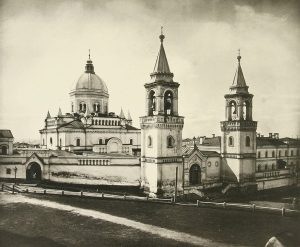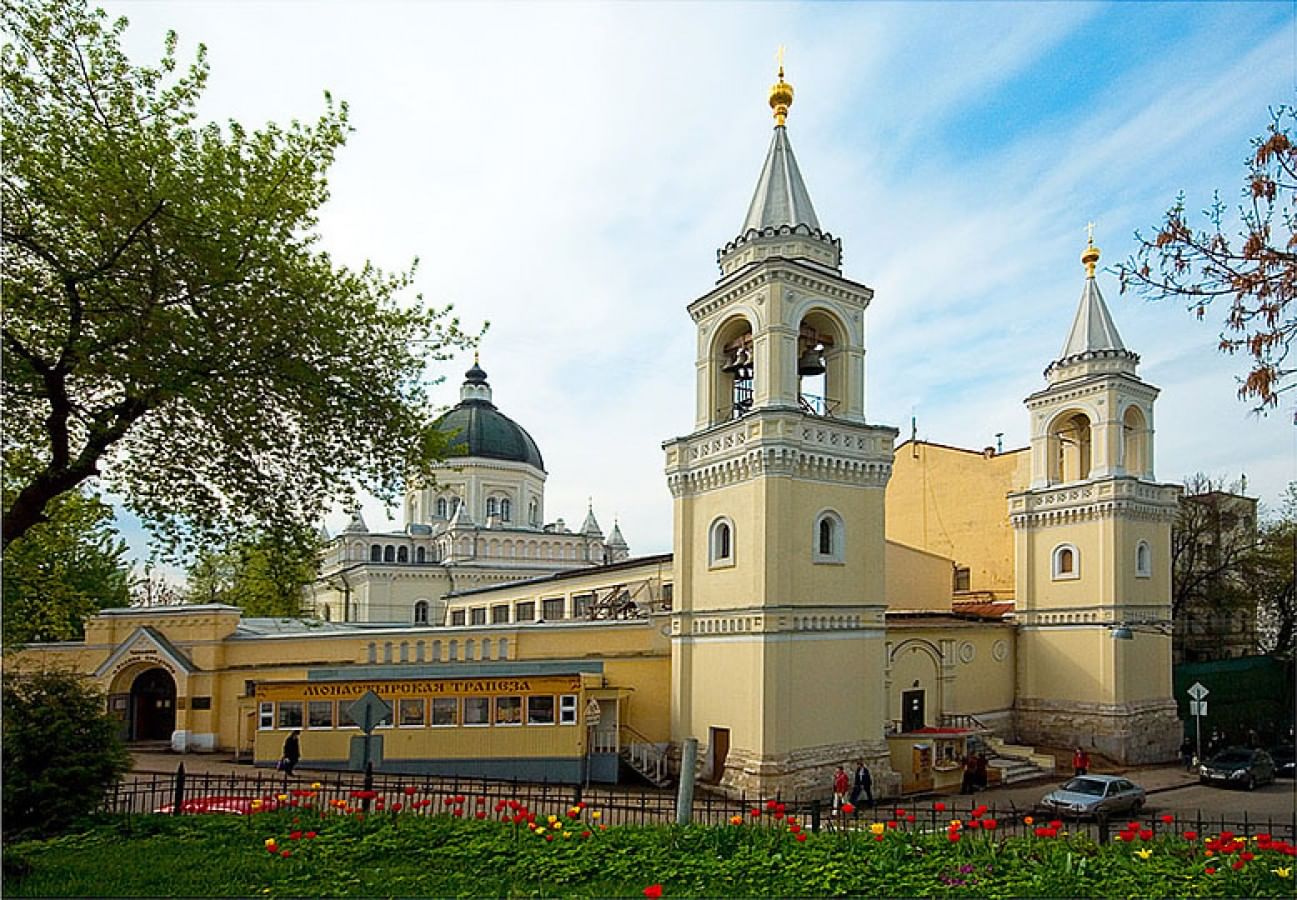Cathedral of the Beheading of Saint John the Forerunner of Saint John the Forerunner Stauropegial Convert

St. John the Baptist Stavropegial Convent is one of the oldest in the capital. It was founded in the 15th century in an area that had belonged to the Moscow Tsar since ancient times. The monastery was the main seat of the Beheading of John the Baptist in Moscow, and the monastery itself gave its name to Ivanovsky Soroka, a church-territorial unit of Moscow. On holidays, the monastery was often visited by tsars and grand dukes. For the princely and military families of Moscow’s White City, the Ivanovsky Monastery served as a family monastery. Many worthy nuns laboured in the monastery, but their deeds remained known only to God. History has preserved the names of only two ascetics. The first of them is the blessed nun Martha, who was considered holy for Christ’s sake (†1638), who was revered by the first Romanov tsars. The prolific Queen Eudoxia, wife of Tsar Mikhail Feodorovich, loved to visit the monastery shortly before giving birth, asking for the prayers of the blessed elder for a safe delivery. Another mysterious recluse was known as a clairvoyant elder of high spiritual life. Her monastic name was Dosifeya Matveyevna (†1810). According to legend, she was the daughter of Empress Elizabeth Petrovna. Her letter to the Putilov brothers is known, in which the elder gives instruction to future holy ascetics. The war of 1812 devastated the Ivanovsky Monastery, and until 1859, the monastery’s cathedral served as a parish church. In 1859, with the blessing of St. Filaret, Metropolitan of Moscow, the monastery began to be restored using the capital of the widow Elizaveta Alekseevna Makarova-Zubacheva. The design of the monastery’s architectural ensemble was commissioned from the renowned Moscow architect M.D. Bykovsky. For 20 years, the patroness of the monastery was Maria Alexandrovna Mazurina, a relative of E.A. Makarova-Zubacheva. In 1879, the Ivanovsky Monastery was opened as a communal monastery. The first sisters, who came from the Anosina Desert, brought with them a strict charter, which ensured the future prosperity of the monastery. The monastery enjoyed the favour of St. Pimen of Ugresh. By the beginning of the 20th century, six abbesses had come from the walls of the Ivanovsky Monastery, some of whom were appointed to monasteries in Moscow and elsewhere. In 1918, the monastery was closed, but monastic life continued within its walls until the beginning of 1927. In October 1941, the premises of the Ivanovsky Monastery housed the NKVD’s Motorised Rifle Regiment. In the post-war years, the Higher School of Militia operated on the territory, which was later transformed into a law institute and subsequently into a university of the Ministry of Internal Affairs. The Cathedral housed the archives of the Moscow Region. Since 1991, the monastery buildings have gradually been returned to the Russian Orthodox Church. During the restoration, the former hospital building with the house church of St. Elizabeth the Wonderworker was completely restored. The consecration of St. Elizabeth’s Church took place in 1995. Divine services in St. John the Baptist Cathedral began in July 2001. The monastery grounds were finally vacated in February 2024. Two clergymen and one novice are glorified in the Cathedral of the New Martyrs and Confessors of the Russian Church: the holy martyrs Alexy Skvortsov and Vladimir Smirnov and the holy martyr Alexandra Kasparova.
Address: Moscow, Maly Ivanovsky lane, 2, p. 33

